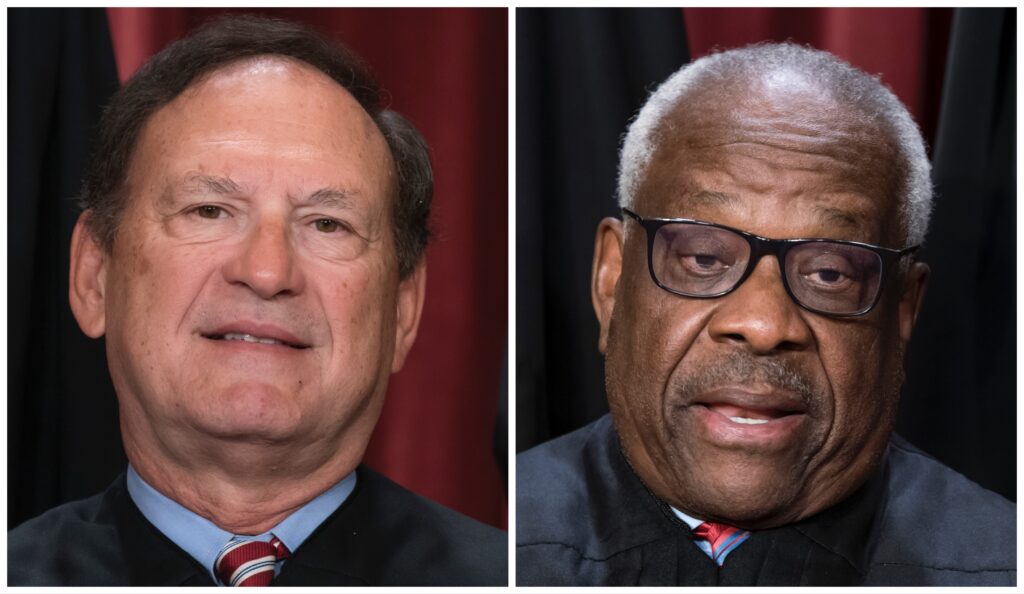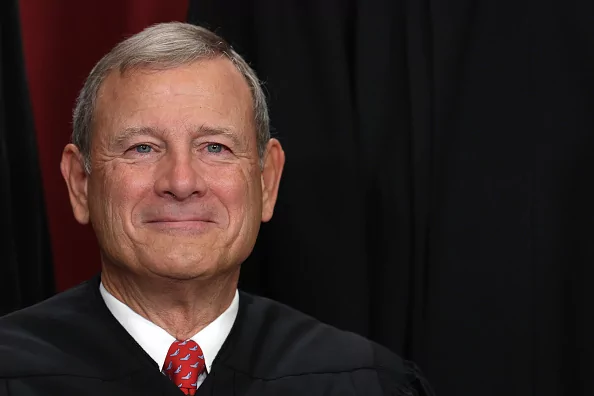
President-elect Donald Trump could have a chance to solidify the Supreme Court’s conservative majority for decades to come after he was elected to a second term in the White House on Tuesday.
Several of the high court’s conservatives are in their 70s and may be tempted to retire with a Republican in the White House for the next four years. That decision would not change the balance of power on the court but could give Trump, who appointed three justices in his first term, an opportunity to extend the longevity of its 6-3 conservative majority.
John Roberts, the chief justice, is 70, while Justices Samuel Alito and Clarence Thomas are 74 and 76, respectively.
In a less likely scenario, the retirement of a Democratic-appointed justice would clear the way for that majority to expand to 7-2.

“If Justices Clarence Thomas and Sam Alito retire and Trump appoints their replacements … Trump will have appointed a majority of the court — the most since Franklin D. Roosevelt,” said Chris Geidner, publisher of the Law Dork newsletter, noting Roosevelt was able to secure five appointees to the high court.
Thomas, Alito, and Roberts, all appointed by Republican presidents, have played a significant role in advancing conservative judicial thought.
Each signed on to a recent decision to upend the 1984 Chevron doctrine, giving courts license to decide if an agency’s actions are in accordance with a law. Other high-stakes cases for the court include decisions that sent the issue of abortion access back to the states and blocked affirmative action in college admissions.
Any new nominees would be in a favorable position to be confirmed in the Senate after Republicans took back the majority on Tuesday, with a net gain of at least three seats.
“I would bet the farm that both Alito and Thomas will step down in the next year or two, and Donald Trump will get to appoint their replacement,” Sen. Susan Collins (R-ME) told Roll Call, adding those successors will be at least as conservative “but 30 years younger.”
Over his first term, Trump left a distinct mark on the Supreme Court by appointing three conservative justices, tipping the ideological balance to the right with the confirmations of Justice Neil Gorsuch, Brett Kavanaugh, and Justice Amy Coney Barrett.
Replacements for any retiring justices are likely to be committed conservatives steeped in originalism, a philosophy that interprets the Constitution according to its original meaning. The liberal justices, now often relegated to dissenting opinions, need at least two conservatives to join them to shift any ruling, a difficult proposition under the court’s current composition.
The conservative composition has also fueled a campaign against Thomas and Alito by left-wing activist groups stoking concerns that the pair have engaged in ethical lapses. Their tenure has even led to calls for impeachment by progressive lawmakers such as Rep. Alexandria Ocasio-Cortez (D-NY).

Thomas, Alito, and Roberts have not given any indication that they plan to retire in the next four years. Still, many observers believe that Thomas and Alito may step down to ensure their legacies continue through conservative successors. Roberts, who often seeks consensus, might view retirement with less urgency.
If any of the conservative justices step down, legal experts and pundits like Trump ally Vivek Ramaswamy have floated names as replacements, including James Ho and Kyle Duncan, judges for the U.S. Court of Appeals for the 5th Circuit. Another possible contender is Judge Lawrence VanDyke of the U.S. Court of Appeals for the 9th Circuit.
What’s more, Senate Republicans will likely speed along Trump’s judicial nominations.
With Sen. Chuck Grassley (R-IA) anticipated to return as head of the Senate Judiciary Committee, the nomination process for Trump’s judicial picks could proceed with minimal resistance. In addition to the Supreme Court, Trump will also work to fill other federal court vacancies, extending his influence across the judiciary.
President Joe Biden has only been able to nominate one justice during his time in office, appointing the first-ever black woman to the high court, Justice Ketanji Brown Jackson. But her appointment did not move the needle of the high court’s majority, as she was named to replace Justice Stephen Breyer, an appointee of former President Bill Clinton.
Biden has placed a record number of nonwhite judges onto the federal judiciary, one of the key goals of his administration, and has named 213 federal judges to date. Trump had appointed a total of 220 federal judges as of the same time period during his first term, according to a tracker from the Heritage Foundation.
CLICK HERE TO READ MORE FROM THE WASHINGTON EXAMINER
On the liberal side of the bench, Justice Sonia Sotomayor is the oldest of the liberal justices at 70. She faces health considerations that some have speculated could lead to her retirement. But liberal justices will have an incentive to stay on the court in the hope that a Democratic president will be elected in four years.
Brown is 54 years old, while the third liberal justice, Elena Kagan, is 64.






